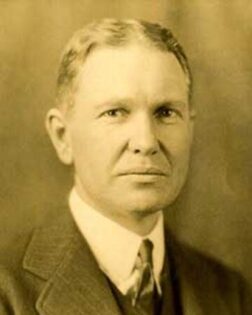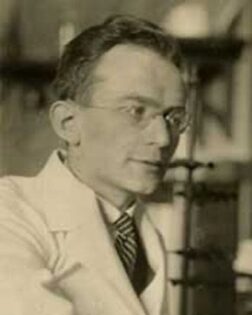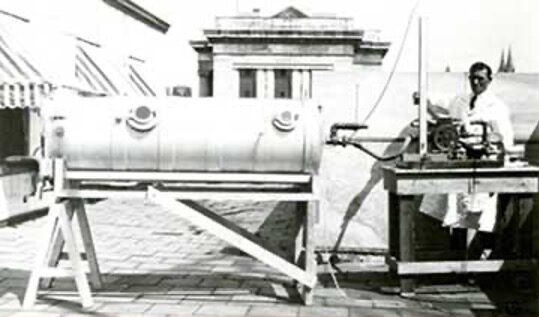Boston’s Brigham and Women’s Hospital (BWH) is an international leader in virtually every area of medicine and has been the site of pioneering breakthroughs that have improved lives around the world.
A major teaching hospital of Harvard Medical School, BWH has a legacy of excellence that continues to grow year after year. With two outstanding hospitals and over 150 outpatient practices with over 1,200 physicians, we serve patients from New England, throughout the United States, and from 120 countries around the world.

"...for the secret of the care of the patient is in caring for the patient."

2nd Physician-in-Chief of BWH

2nd PCCM Division Chief, BWH

1929, BWH
The BWH name is a reflection of our history. In 1980 three of Boston’s oldest and most prestigious Harvard Medical School teaching hospitals – the Peter Bent Brigham Hospital, the Robert Breck Brigham Hospital, and the Boston Hospital for Women – merged to form Brigham and Women’s Hospital.
As a national leader in improving health care quality and safety, we have helped to develop some of the industry’s best practices, including computerized physician order entry (CPOE) to prevent medication errors. The CPOE is now a nationally accepted safety practice.
The BWH Biomedical Research Institute (BRI) is one of the most powerful biomedical research institutes in the world and the second largest recipient of National Institutes of Health (NIH) funding among independent hospitals in the United States. With over $640 million in total research funding and over 1,000 principal investigators, BWH has long had great success in research as measured by the number of important discoveries made, the size and scope of its research portfolio and the volume of publications annually.
The BWH has over a 100-year history of innovation in pulmonary and critical care medicine. The hospital’s first Chief Resident Francis Weld Peabody established the hospital’s first PFT lab and established the importance of measuring vital capacity in clinical care. He is also revered for his sage clinical advice “for the secret of the care of the patient is in caring for the patient.” Among the most notable achievements, in 1929, the iron lung was developed and first deployed in the successful treatment of a patient with polio at the Brigham. Soma Weiss, the 2nd Physician-in-Chief of the Brigham discovered bronchial hyperresponsiveness to histamine as a characteristic of asthma.
As a national leader in improving health care quality and safety, we have helped to develop some of the industry’s best practices, including computerized physician order entry (CPOE) to prevent medication errors. The CPOE is now a nationally-accepted safety practice.
The BWH Biomedical Research Institute (BRI) is one of the most powerful biomedical research institutes in the world and the second largest recipient of National Institutes of Health (NIH) funding among independent hospitals in the United States. With over $640 million in total research funding and over 1,000 principal investigators, BWH has long had great success in research as measured by the number of important discoveries made, the size and scope of its research portfolio and the volume of publications annually.
The BWH has over a 100-year history of innovation in pulmonary and critical care medicine. The hospital’s first Chief Resident Francis Weld Peabody established the hospital’s first PFT lab and established the importance of measuring vital capacity in clinical care. He is also revered for his sage clinical advice “for the secret of the care of the patient is in caring for the patient.” Among the most notable achievements, in 1929, the iron lung was developed and first deployed in the successful treatment of a patient with polio at the Brigham. Soma Weiss, the 2nd Physician-in-Chief of the Brigham discovered bronchial hyperresponsiveness to histamine as a characteristic of asthma.
After World War II, in collaboration with Professor Jere Mead, several Brigham physician investigators contributed to our current understanding of gas exchange, regional ventilation and respiratory mechanisms, leading to the development of body plethysmography. More recently, together with Professors K. Frank Austen and E.J. Corey, Jeffrey Drazen led a remarkable translational research program to establish a link between cysteinyl leukotrienes and asthma pathogenesis that resulted in the development of four new drugs to treat asthma and allergic diseases. Today, the Lung Research Center at BWH now supports more than 50 leading physician-scientists with over 60 million dollars in grant funding to pursue the next cycle of innovation in the care of our patients.
Milestone achievements at Brigham and Womens’ Hospital can be seen on the main site.
Historical images by Harvard Medical Library in the Francis A. Countway Library of Medicine.